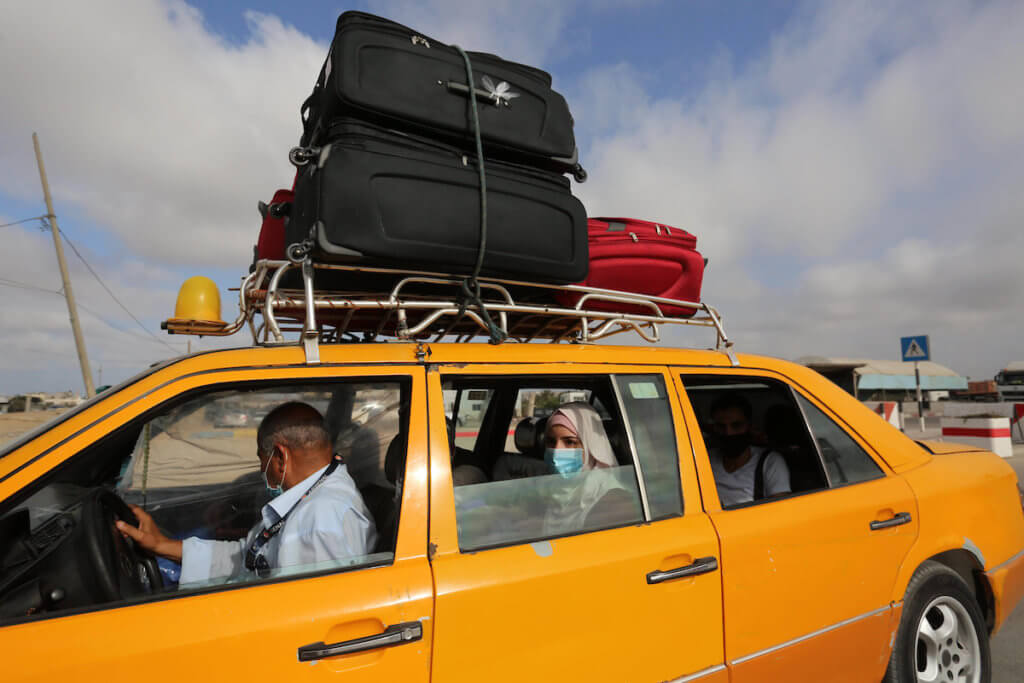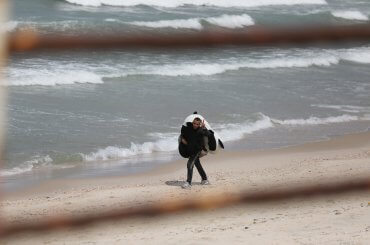The Latest:
- 51,607 Palestinians tested positive for COVID-19; 379 have died
- Of the Palestinians who tested positive for COVID-19, 37,582 are in the West Bank; 3,184 are in the Gaza Strip; 10,841 are in East Jerusalem
- 258,290 Israelis tested tested positive for COVID-19; 1,633 have died

Egypt-Gaza border opens for three days
For a second time since the pandemic began, the Rafah border crossing between Egypt and Gaza opened in both directions for three days this week, allowing stranded Palestinians to return to their homes.
Around 1,700 entered Gaza and 2,659 went to Egypt. Breaking from Gaza’s stringent two week to 21 days quarantine procedure for returning travelers, Palestinians will only need to stay at a government-run isolation center for one-week. They are allowed to spend the remaining seven days of quarantine at their homes, according to Gisha, an Israeli human rights group that monitors Gaza borders.
The last time the Rafah border opened was in August. Before that, the border was shut since mid-March.
The northern crossing into Israel at the Erez checkpoint is open, however, Gisha found that it is about 2% of the traffic before the pandemic started. There are a number of factors as to why that is, beyond just health measures. Israel tightened access during the summer and at around the same time the Palestinian Authority stopped filing paper work for sick Palestinians seeking exit permits from Gaza for treatment in Israel, the West Bank and East Jerusalem. We interviewed the families whose infants died in the days that followed the suspension of humanitarian permits.
In recent weeks the WHO took over the humanitarian exit permit process. New data is available this week and the number of crossings for emergency medial treatment are still low. The WHO filed permits for 139 Palestinian patients in August.
“Recorded permit approvals for Gaza patients were approximately 10% of the monthly approvals prior to the COVID-19 outbreak” the WHO reported in their situation report.
For the last five months Gaza has been under partial lockdown where at least a dozen hotspots have police restricting movement and business have shuttered. Some areas have overnight curfews. These measures—while reaching Gaza later than other parts of the world—have stemmed a wider outbreak.

September peaks
In September the number of new cases of COVID-19 increased by 84% in Gaza, with an average of 86 new cases per day across the month, according to the World Health Organization’s latest situation report. The total number of COVID-19 cases is at just over 2,500, which is still relatively low. Testing is still quite limited. The Thursday before last, Gaza’s ministry of health announced it ran out of lab equipment to process swabs.
In the same period in the West Bank, cases continued to rise by 40% during the past month, with a total of 20,603 new cases, or a daily average of 686 new cases.

‘Manger Square is like the Square of Ghosts’
Bethlehem is empty, and has been for months. Our correspondent Yumna Patel’s latest video report from the West Bank explores the impact of COVID-19 on business owners who had made their livelihoods off the tourism industry.
Nabil Giacaman owners a souvenir shop in Manger Square and told Patel, “If we want to describe Bethlehem during this time, you can see Manger Square is like the Square of Ghosts.”
Patel reports: “At any given time of year, the streets of Bethlehem’s Old City would be filled with tourists from all over the world, visiting religious sites, and buying tokens of the holy land to take home with them.”
“But now, shops have been closed and the streets are empty, and people in Bethlehem have been wondering, if life here will ever return back to normal,” she continued.
Before the pandemic hit, economic prognosis wasn’t good. The Palestinian economy was expected to contract 3 to 4% in 2020, according to the United Nations Conference on Trade and Development, or UNCTD, in their latest report on the economy in the occupied Palestinian territory.
Less than one month into the pandemic, UNCTD found the fiscal revenues had “declined to their lowest levels in 20 years.”


